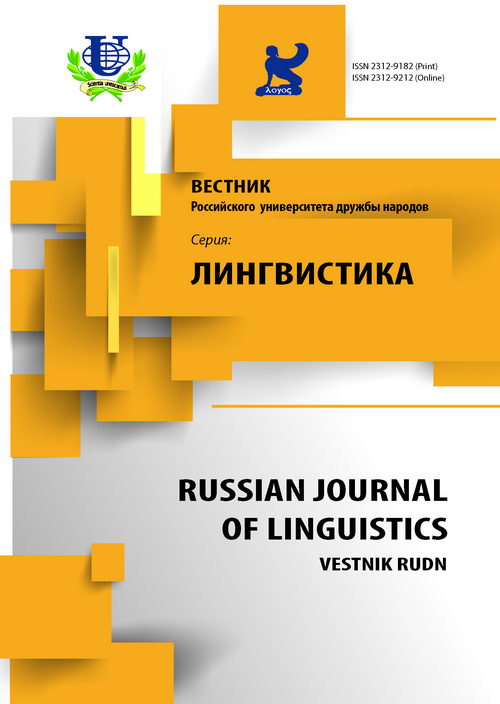Precedent Names of Chinese National Culture
- Authors: Lenintseva VA1, Burukina TN2
-
Affiliations:
- Moscow State Pedagogical University
- Peoples’ Friendship University of Russia
- Issue: No 2 (2015)
- Pages: 70-89
- Section: Articles
- URL: https://journals.rudn.ru/linguistics/article/view/9350
Cite item
Full Text
Abstract
The article presents an analysis of precedent names as symbols of precedent phenomena in the material and spiritual culture of the Chinese. An evaluation of daily events and the attitude of the Chinese towards the world are reflected in the vocabulary of their language. The symbols of precedent phenomena can be proper names (anthroponomy, names of places), the date, as well as figurative and expressive means of language (idioms, sayings). Precedent names as symbols of precedent phenomena vividly and accurately capture the above-mentioned points, and encompass almost all spheres of life, history and spiritual development. The subject of our study are national precedent phenomena that define the ethno-cultural specificity, reflecting the history and culture of the Chinese people and their national character. Representatives of different cultures have different perceptions of the same precedent phenomena. Inadequate understanding of national invariants of precedent phenomena is often the source of communication failures. The aim of this paper is to highlight precedent names as a symbol of precedent phenomena in the discourse of the Chinese linguocultural community. For this purpose a classification of precedent names in Chinese was carried out. Precedent names which play an important role in shaping the Chinese national consciousness were taken from the Chinese-Russian Dictionary.
About the authors
V A Lenintseva
Moscow State Pedagogical University
Email: vallenin@mail.ru
Department of Chinese Language Institute of Foreign Languages
T N Burukina
Peoples’ Friendship University of Russia
Email: t.burukina@mail.ru
Department of Foreign Languages Philology Faculty
References
- 现代汉语词典。北京商务书馆. Словарь современного китайского языка. Пекин, 2004.
- Голубева Н.А. Деривационная активность концепта «прецедент» // Вестник Нижегородского университета им. Н.И. Лобачевского, 2008. № 5. С. 26.
- Джанаева В.В. Лингвокогнитивные основы коммуникации: инокультурные прецедентные феномены: Дисс. канд. филол. наук. 2008.
- Лёве. М. Китай: династия Хань // М. Лёве М.: ЗАО Центрполиграф, 2005.
- Миньяр-Белоручев Р.К. см. Щичко В.Ф. Китайский язык. Теория и практика перевода // В.Ф. Щичко. М.: Восток-Запад, 2004.

















